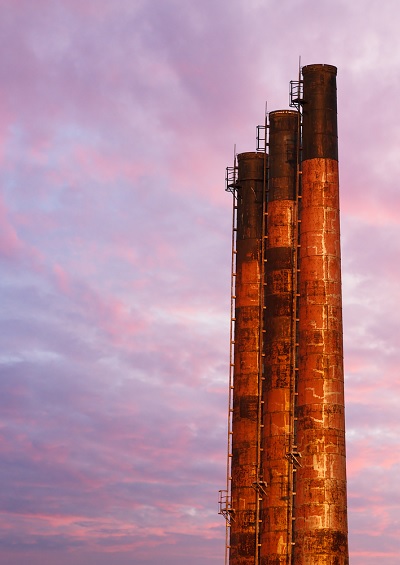Where the Manufacturing Jobs Are
What percentage of U.S. jobs does the manufacturing sector account for?
December 30, 2014

It was big news when Apple announced that it planned to “reshore” some of its computer manufacturing to the United States. The news was seen as a harbinger of a much-needed rebound for the U.S. manufacturing sector.
Audio version on Marketplace Radio:
Listen to The Globalist’s Stephan Richter and Marketplace’s David Brancaccio discussing this quiz on Marketplace Morning Report (length 2:15 min.)
We wonder: What percentage of U.S. jobs does the manufacturing sector account for?
A. 1.5%
B. 8.2%
C. 12%
D. 30%
A. 1.5% is not correct.
Agriculture and related activities account for just 1.5% of total U.S. employment — even though the United States currently has about 2.2 million working farms. These farms cover 3.7 million square kilometers of land, an area larger than the entire country of India.
Surprisingly, the United States has fewer farmers than farms. According to the Bureau of Labor Statistics, 2.1 million Americans were employed as agricultural workers (as of 2012).
Part of the reason why there are fewer farmers is because a large number of people who live on small farms do not claim farming as their primary occupation. Also, hired laborers may work on many different farms throughout the year, as planting and harvesting seasons vary based on location and crop.
Furthermore, the official employment figures include only legal U.S. workers. These workers are supplemented by illegal migrant workers. According to the U.S. Department of Labor, about half of all hired workers on U.S. crop farms are illegal migrants.
B. 8.2% is correct.
In 2012, the U.S. manufacturing sector — which includes companies that make physical goods, anything from textiles and shoes to machinery and aircraft — accounted for just 8.2% of U.S. employment. That was the equivalent of 11.9 million jobs.
A decade earlier, in 2002, the U.S. manufacturing sector accounted for 10.7% of the workforce, or 15.3 million jobs. Part of this 22% decline in manufacturing employment over the last decade is a consequence of the deep recession of the late 2000s.
But the drop is also part of a larger and longer-term decline in U.S. manufacturing employment. In the 1950s, the manufacturing sector accounted for almost 30% of total U.S. employment.
Manufacturing continues to play a larger role in many other advanced economies. The manufacturing sector accounts for 19.8% of total jobs in Germany, 18.6% in Italy, and 16.6% in Japan and in South Korea. However, as in the United States, these figures are all lower than they were a decade ago.
C. 12% is not correct.
The U.S. manufacturing sector accounted for 12% of U.S. GDP in 2012, according to the World Bank. By comparison, manufacturing contributes about 16% of world GDP.
Manufacturing’s share of GDP is highest in East Asia, where it is responsible for 31% of GDP. It is lowest in Sub-Saharan Africa, where it contributes 9% to that region’s GDP.
Back in its 1950s heyday in the United States, the sector reached its peak at 28% of GDP. Over the next several decades, the U.S. economy evolved into a largely services-based economy.
Services — everything from haircuts and car repairs to legal advice and medical treatment — now account for almost 80% of U.S. GDP. The services sector also accounts for about 80% of U.S. jobs.
D. 30% is not correct.
China’s manufacturing sector currently accounts for about 30% of the country’s GDP. China surpassed Germany to become the world’s third-largest manufacturing nation a decade and a half ago, in 1999. It surpassed Japan as the second-largest manufacturer in 2007.
China finally overtook the United States as the world’s largest manufacturer in 2010. That year it produced 18.9% of the world’s manufacturing output, compared to 18.2% for the United States.
China’s manufacturing sector employed 99 million workers as of 2009 (the latest year for which reliable data are currently available), according to the U.S. Bureau of Labor Statistics.
That number was equal to almost a third of the entire population of the United States at the time (307 million). In fact, China’s manufacturing workforce is equal to almost 80% of the Japan’s total population (127 million) — and it is considerably larger than Germany’s (81 million).
Despite its recent success, however, there are signs that China’s rapid manufacturing growth has begun to stall. The country’s working-age population is peaking and will soon begin to decline.
Furthermore, low wages and poor working conditions have sparked increasing unrest and strikes — especially among the country’s urban manufacturing workforce.
Takeaways
Manufacturing continues to play a larger role in many other advanced economies.
China's manufacturing sector employed 99 million workers as of 2009.
The manufacturing sector accounts for 19.8% of total jobs in Germany.
China's manufacturing workforce is equal to almost 80% of the Japan's total population.
